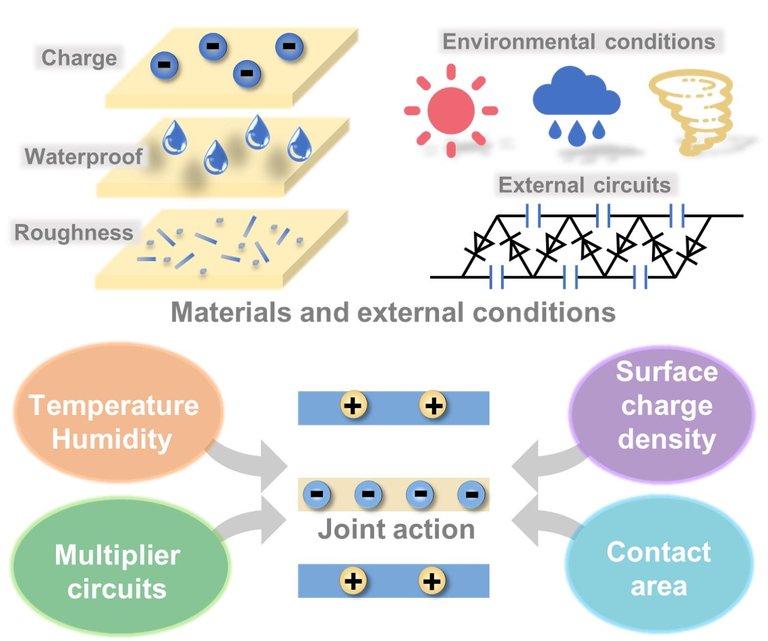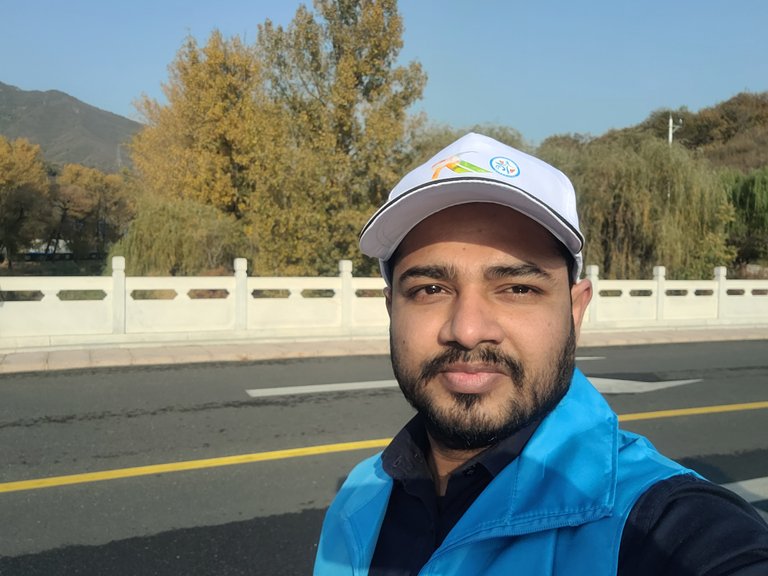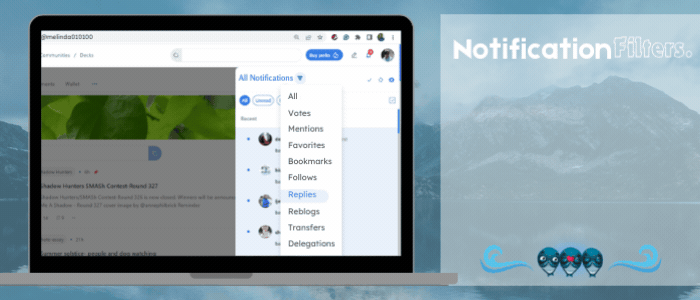Things that affect W-TENGs

Greetings my dear hive fellows.
I hope you guys are having a great weekend. Last week I discussed the Tribolelctric Nanogenerator for harvesting wind energy harvesting effectively. As a new technology, it has become a research hotspot around the world in recent years. Today, I am going to tell some challenges and factors that affect on the performance of the device. As a researcher in this area, I have gathered a bit of knowledge on the subject and I am going to put light on these.
Many things can affect the TENG's power output, including the triboelectric material used for the device fabrication, the structure of the device that can include the variation in size, complexity in the working mechanisms, the surface charge density of the functional materials, the contact area of the surface of the two separate film or layer during the operation, the external circuitry including the power management and power enhancement circuits, and some external conditions such as the speed of the wind due to differences in temperature and pressure in the weather or local environmental history, humidity, location, topography, and seasons of the year.
Mainly, We can observe that the performance of the device can be affected by two types of factors: those that come from the materials and those that come from external factors and are non-related to the device factors themselves. The charge density, the sharpness, and the water hydrophobicity of the surface are some of the most important factors that are related to the characteristics of the materials. In addition, the degree of polarity of the materials and the structure of the device itself are important for making the device perform better as the charge polarity affects directly on the flow of electrons in the external circuits.
Triboelectricity is an output obtained from the material’s property related to charge behavior since different materials have different levels of polarity and surface charge densities. Then, different materials with different charge levels and voltages can be chosen for the device fabrication. Charge injection and chemical processes are two ways that the surface charge density of a material can be increased for higher device output. You can also change the material's surface's functional groups, crystallinity, and defects to make the surface charge density higher.
In some situations, W-TENGs also need certain standards when it comes to how hydrophobicity of the material affects the outputs. Chemical manufacturing or spreading hydrophobic agents can help make the material more hydrophobic. If the material isn't very hydrophobic, water molecules will have a bigger effect on the W-TENG's electrical signal during the rainy day. This is also an important benefit that it can work in some adverse weather conditions.
It's also important to know that the W-TENG's output changes depending on how rough the material surface is. This is because roughness affects the contact area and triboelectric effect of the device. Chemical etching, plasma etching, and 3D printing are some of the most popular ways to make the surface of triboelectric material with more roughness. Nanoparticles and nanowires can also be added to the surface to enhance the surface roughness.
Using different structures to collect wind energy has a direct effect on the triboelectric surface which is an external factor in the wind energy harvesting by triboelectric nanogenerators. In addition to optimizing the structure, the size of the TENG also plays a role. Improving the power output can be achieved by optimizing the structural factors. TENGs that collect wind energy have a certain range of wind speeds that they can be used with. The higher the wind speed, the more power the TENG can produce in that range. A lot of the places where wind energy collecting with TENGs is used are directly in nature, and the weather and humidity can have a big effect on the electricity they produce. It is generally true that the TENG works better when it is cooler and less humid.
The surroundings will be different during different times of the year and weather, and the TENG will produce different amounts of electricity. Some external circuitry is also used to enhance the device output. This is where scientists can improve the TENG's electrical signal even more by using circuit management techniques. Some electrical parts, like transformers, can be used to change the output signal so that it has the right amount of current or power for a specific portable sensor device.
Temperature, dampness, surface charge density, friction area, and external electronics are some of the most important factors that affect how well the device works. During the tests, these factors can change and impact the output of the device. For example, the material's surface hardness, the TENG's structure, and the speed of the air can all impact the W-TENG's frictional area. Changing one situation can have an impact on many other things, both inside and outside the W-TENG. Changing these external factors can cause changes in the W-TENG's electrical outputs. To increase the performance and power output, the factors discussed above—the material, the structure, and the external conditions—are taken into account. To get the right properties for a material, it is needed to think about its level of hydrophobicity, toughness, flexibility, and transparency, as well as its surface charge density and roughness. There are different materials which are better in these aspects such as the most commonly used polymers such as PTFE, PVC, and FEP, which are hydrophobic, transparent, and have good triboelectric qualities. This makes them good for W-TENGs that has excellent performance. Different structures have different benefits. As W-TENG has been developed over the years, both its internal and surface structures have changed many times to make the most of their benefits and improve the W-TENGs' real powers.
The common electrodes Al and Cu for the W-TENG structure must be tough and strong so that they can work reliably even when the wind is blowing very fast. Some external conditions can be also considered. Because of this, it's important to think about how the external conditions might affect the design of the device and pick the right materials. For example, making devices in deserts and the ocean requires a different approach because of the weather conditions. When used in real life, external circuits can be used to adjust the output signal to meet the needs.
There are several steps in the general energy-storing process for the W-TENG. These include using W-TENG to make electricity, power control circuits to store the power in different storage systems, and finally delivering the power into a portable device. The storage device is important for the environment and is needed in many situations to keep the power supply stable in a lot of small electronics. It would be better if the sensors were self-powered, so they wouldn't need a power storage system for W-TENG to work. This could be done with proper power control circuits.
In my next blog, I will discuss about the application areas of wind-driven triboelectric nanogenerators which will definitely make you amazed to explore the the excellent potentiality of the new technology. I hope you learn something new from this blog.
Thanks a lot for your time and attention. I will catch up with you at the next one.
Wish you a great day!


Thanks for your contribution to the STEMsocial community. Feel free to join us on discord to get to know the rest of us!
Please consider delegating to the @stemsocial account (85% of the curation rewards are returned).
You may also include @stemsocial as a beneficiary of the rewards of this post to get a stronger support.
Thanks for the support!
https://x.com/lee19389/status/1811173960836329939
#hive #posh
Thanks!
Welcome
Sending Love and Ecency Vote!

Thanks for the support!
Is your Phd research along this field? This is quite interesting.
Yeah, my PhD research is related to this area with energy harvesting and self-powered sensors. You can read more details from my recent publication about it from here- https://www.nature.com/articles/s44287-024-00061-6
Thanks for stopping by.
Great. I will have a read
Congratulations @tanzil2024! You have completed the following achievement on the Hive blockchain And have been rewarded with New badge(s)
Your next target is to reach 88000 upvotes.
You can view your badges on your board and compare yourself to others in the Ranking
If you no longer want to receive notifications, reply to this comment with the word
STOPwind-powered triboelectric nanogenerators I'm interested in that part I didn't know it could be stored that way